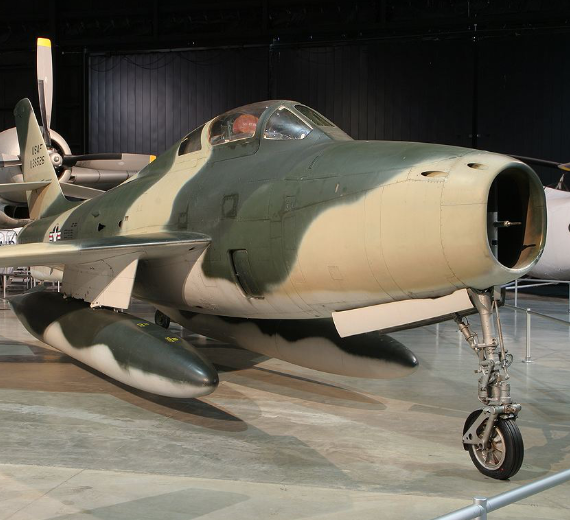Republic Aviation
F-84F Thunderstreak
Role Fighter-bomber
Reconnaissance aircraft
National origin United States
Manufacturer Republic Aviation
First flight June 3, 1950
Introduction May 12, 1954
Retired 1972 (US ANG)
1991 (Greece)
Primary users United States Air Force
German Air Force Belgian Air Force
Number built 3,428
Developed from Republic F-84 Thunderjet
Variants Republic XF-84H Thunderscreech
.
History Republic Aviation Corporation.
Republic F-84F Thunderstreak
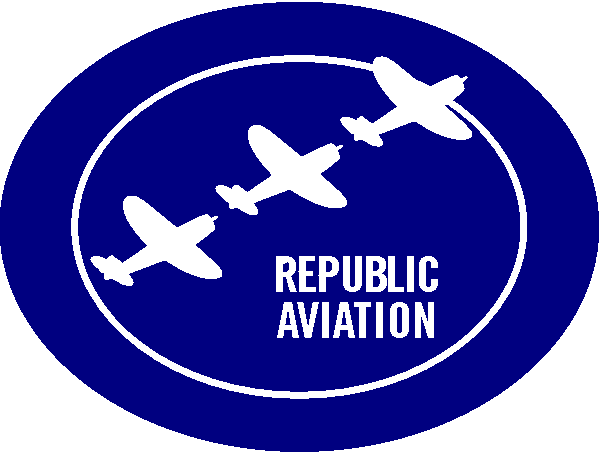
The Republic F-84F Thunderstreak was an American swept-wing turbojet fighter-bomber. While an evolutionary development of the straight-wing F-84 Thunderjet, the F-84F was a new design. The RF-84F Thunderflash was a photo reconnaissance version.
In 1948, a swept wing version of the F-84 was created with the hope of bringing performance to the level of the F-86. The last production F-84E was fitted with a swept tail, a new wing with 38.5 degrees of leading edge sweep and 3.5 degrees of anhedral, and a J35-A-25 engine producing 5,300 pound-force (23.58 kN) of thrust. The aircraft was designated XF-96A. It flew on 3 June 1950 with Oscar P. Haas at the controls. Although the airplane was capable of 602 knots (693 mph, 1,115 km/h), the performance gain over the F-84E was considered minor. Nonetheless, it was ordered into production in July 1950 as the F-84F Thunderstreak. The F-84 designation was retained because the fighter was expected to be a low-cost improvement of the straight-wing Thunderjet with over 55 percent commonality in tooling
Design
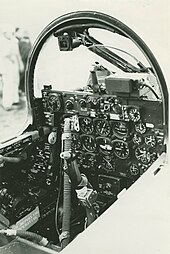
The Thunderstreak suffered from the same poor takeoff performance as the straight-wing Thunderjet despite having a more powerful engine. In reality, almost 700 pounds-force (3.11 kN) or ten percent of total thrust was lost because the J65 was installed at an angle and its jet pipe was not perfectly straight (in addition to the usual thrust losses from the long jet pipe). On a hot day, 7,500 feet (2,285 m) of runway were required for takeoff roll. A typical takeoff speed was 160 knots (185 mph, 300 km/h). Like the Thunderjet, the Thunderstreak excelled at cruise and had predictable handling characteristics within its performance envelope. Like its predecessor, it also suffered from accelerated stall pitch-up and potential resulting separation of wings from the airplane. In addition, spins in the F-84F were practically unrecoverable and ejection was the only recourse below 10,000 feet (3,000 m).
Operational history



Project Run In completed operational tests in November 1954 and found the aircraft to be to USAF satisfaction and considerably better than the F-84G. However, ongoing engine failures resulted in the entire fleet being grounded in early 1955. Also, the J65 engine continued to suffer from flameouts when flying through heavy rain or snow. As the result of the problems, the active duty phaseout began almost as soon as the F-84F entered service in 1954, and was completed by 1958. Increased tensions in Germany associated with construction of the Berlin Wall in 1961 resulted in reactivation of the F-84F fleet. In 1962, the fleet was grounded due to the corrosion of control rods. A total of 1,800 man hours were expended to bring each aircraft to full operational capacity. Stress corrosion eventually forced the retirement of ANG F-84Fs in 1971.
0
KmCeiling
0
KmCombat RANGE
0
Km/hAircraft Speed
0
Max Crew
Photo Gallery
Republic Aviation Corporation.
Republic F-84F Thunderstreak


Republic Aviation Corporation. Originally known as the Seversky Aircraft Company
Republic F-84F Thunderstreak
General Info
-
-
- Crew: 1
- Length: 43 ft 4.75 in (13.23 m)
- Wingspan: 33 ft 7.25 in (10.25 m)
- Height: 14 ft 4.75 in (4.39 m)
- Wing area: 325 sq ft (30 m2)
-
Powerplant
-
-
- Empty weight: 13,830 lb (6,200 kg)
- Max takeoff weight: 28,000 lb (12,701 kg)
- Powerplant: 1 × Wright J65-W-3 turbojet, 7,220 lbf (32.1 kN) thrust
-
Performance
- Maximum speed: 695 mph (1,119 km/h, 604 kn) at sea level
- Range: 810 mi (1,304 km, 704 nmi) combat radius with two droptanks
- Service ceiling: (14,000 m)
- Rate of climb: 8,200 ft/min
- Wing loading: 86 lb/sq ft (423 kg/m2)
Armament
-
- 6× .50 in (12.7 mm) Browning M3 machine guns, four mounted in nose over intake, two mounted in the wing roots, 1,800 rounds total
- Up to 6,000lb (2,727 kg) of rockets and bombs, including one Mark 7 nuclear bomb
.
Links to Youtube & Others
The Bf 108A first flew in 1934, followed by the Bf 108B in 1935. The Bf 108B used the substantially larger, 12.67 litre displacement Argus As 10 air-cooled inverted V8 engine. The nickname Taifun (German for "typhoon") was given to her own aircraft by Elly Beinhorn, a well-known German pilot, and was generally adopted
Republic F-84F Thunderstreak
Development of the type continue and in 1935 the Bf 108B appeared with the fin and rudder having undergone modifications.
Youtube Link
Conceived as a competitive aircraft the Bf 108 would take part in the 1936 Berlin Olympics.

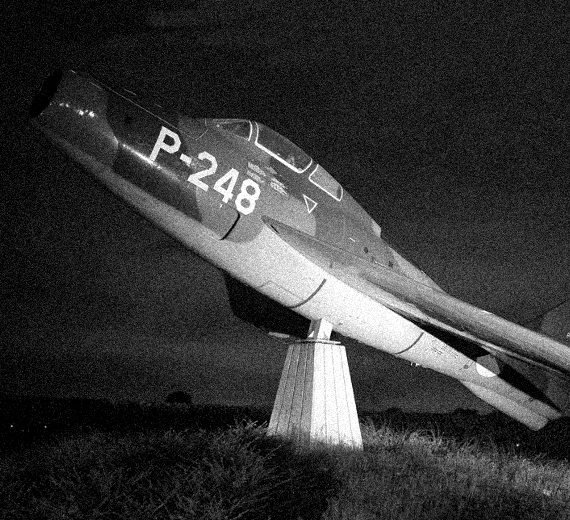

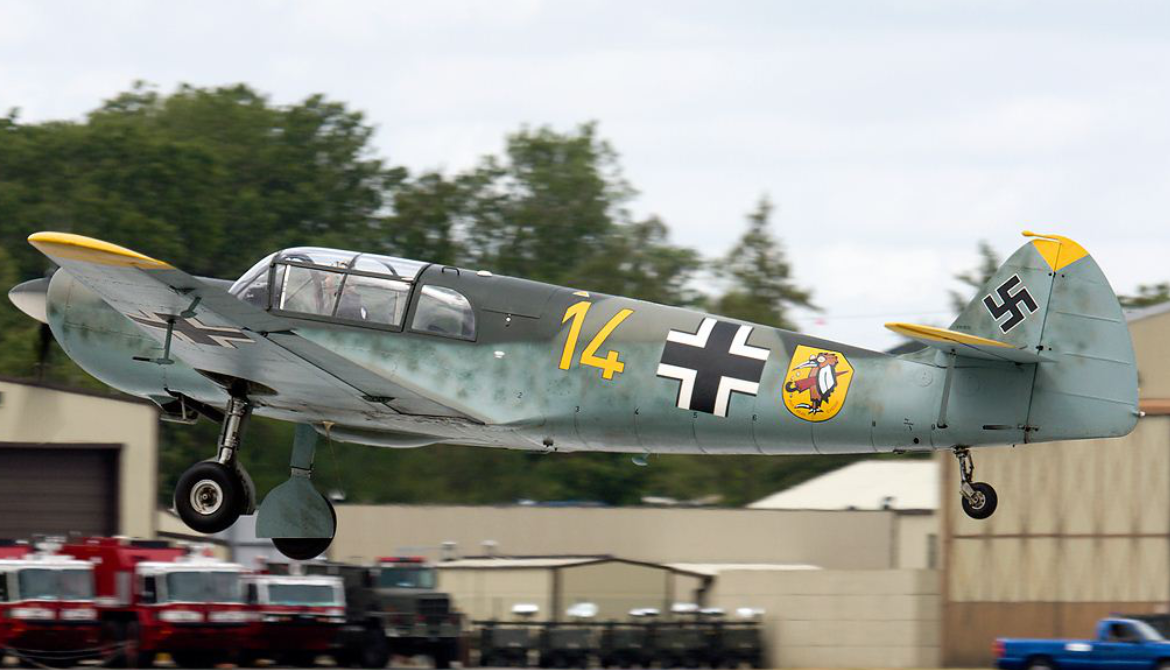
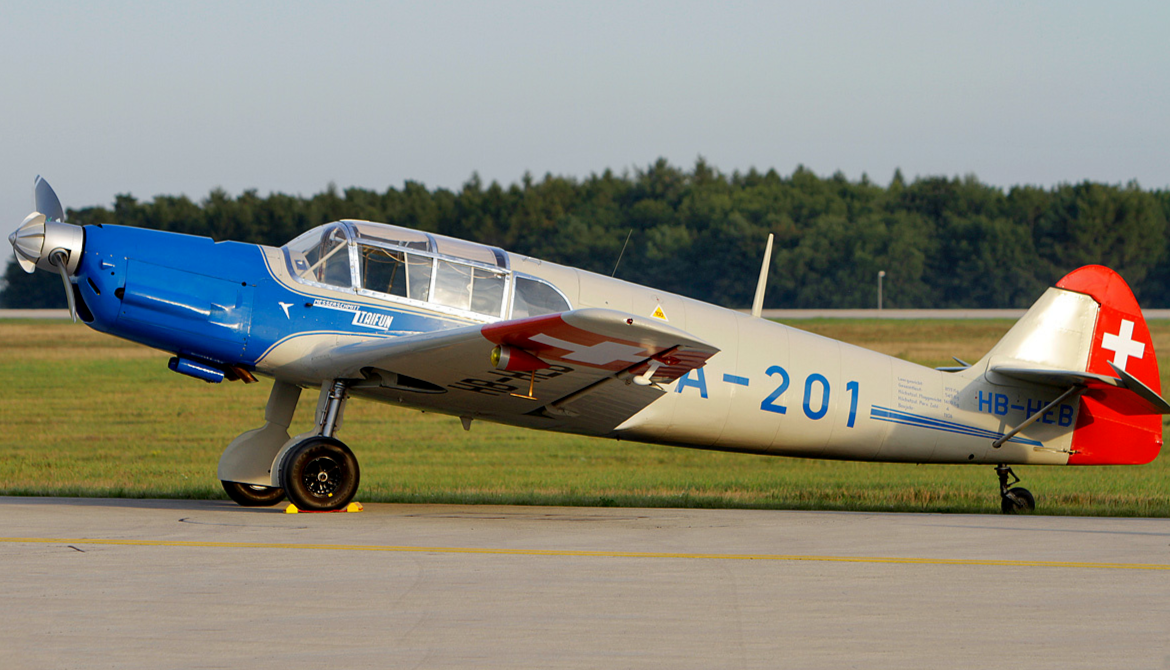

-depositphotos-bgremover.png)

